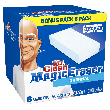Restoring antique porcelain plates is a phrase that can often fill many people with dread. This is understandable since these types of plates and dinnerware is often very fragile and expensive. Luckily, this is a task that can actually be very easy to do, as long as you follow a few simple precautions. The number one rule when dealing with antique porcelain plates is that you need to be careful when doing it. As long as you keep that in mind, as you follow these simple guidelines you will have no problem in getting your porcelain plates clean again.

Remove Stubborn Stains Quickly Get everything looking clean again: Walls, floors, baseboards, counters, blinds, appliances, and more. Micro-scrubbers easily reach into surface grooves, lifting dirt away. This low-cost 8-pack is great for stubborn stains and touble areas. Check out Mr. Clean Magic Eraser 8-Pack today!
Need help figuring out how to clean your glass tiles? The best way to keep them clean is by prevention, but you can still ...
Discover MoreVarnish can get on glass in several different ways. Luckily, there are also several different ways to clean it off. Here ...
Discover MoreSuperglue, while an extremely helpful substance, also has the potential to become a huge mess. One such example is when ...
Discover MoreFREE SERVICE: Get tips like this every week in Cleaning Tips from Tips.Net. Enter your address and click "Subscribe."
2022-04-09 18:33:33
Donald Mikel
I have a large dinner set - Minton Ironstone c1850 inherited from my mother. She routinely ran it through the dishwasher and this caused the edge or verge to chip. It is a set for 24 and includes dinner plates and soups so it huge. I don't have the time or skills to hand paint the edges but I have heard there may be an instrument that can restore the edges of dinner plates. Do you know about this or have any other ideas about how to do it. Also I would need to know what type of paint to get and how to match it.
Thanks Don Mikel
FREE SERVICE: Get tips like this every week in Cleaning Tips from Tips.Net. Enter your address and click "Subscribe."
Copyright © 2025 Sharon Parq Associates, Inc.
Comments